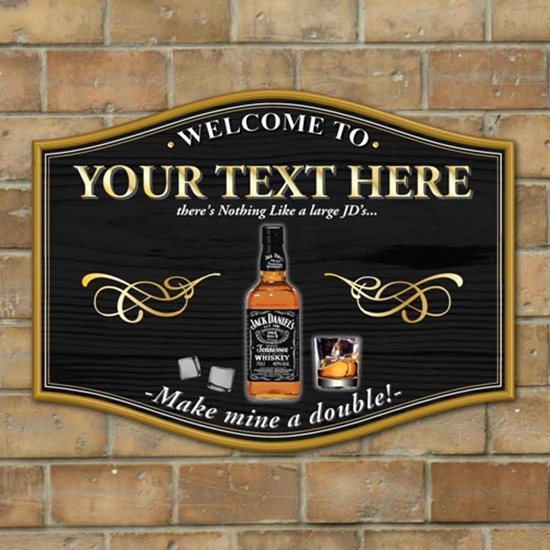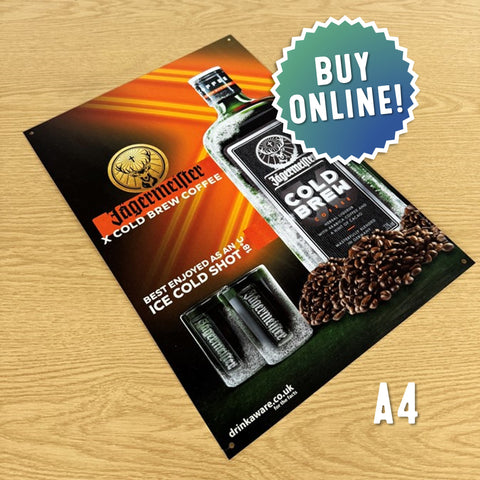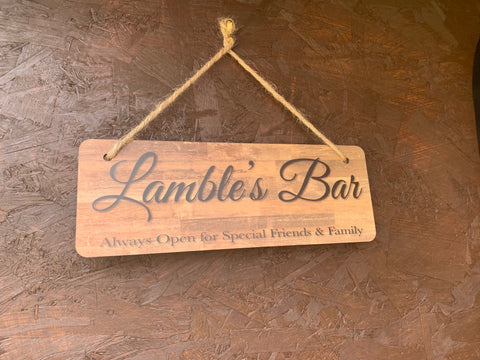Handy Info To Selecting Man Cave Signs
Wiki Article
What Are The Main Differences Between Bar Signs In Terms Style And Design?
Bar signs differ in design and style, to fit the ambience, theme and the target market of the establishment. Here are the main designs and styles: 1. Vintage/Retro
The characteristics of this style are classic, vintage look that is usually weathered or shabby.
Vintage logos, old-fashioned images, metals with a rusty finish are all design elements.
Uses: Perfect for bars that have an old-fashioned theme, such as speakeasies and pubs. Also classic American eateries.
2. Modern
Characteristics: Sleek, clean, minimalist.
Design elements Simple fonts as well as bold or monochromatic colors, geometric shapes and materials such as acrylic or metal.
Uses: Ideal for modern bars, elegant lounges and trendy cocktail bars.
3. Rustic
The characteristics are earthy, natural and warm.
Design elements: Use of reclaimed wood hand-painted or carved writing natural colors, as well as rustic finishes.
Applications: Great for country-style bars, farm-to table establishments and mountain lodges.
4. Industrial
Characteristics: Raw, unfinished, edgy.
Design elements: Exposed metal Reclaimed Materials, Pipes Neutral Tone, Bold Fonts.
Uses: Excellent bars for warehouses that have been converted, lofts, and urban settings.
5. Glamorous
Characteristics: Elegant, luxurious, eye-catching.
Design Elements Design Elements: Silver, gold and other metallics. Glitter, ornate typefaces as well as sophisticated graphics.
Applications: Perfect for high-end bars and nightclubs that have customers who are high-end.
6. Nautical
Characteristics : Coastal marine and adventure.
Design Elements Nautical components like anchors, ships, blue and white color schemes. Rope and wood textures.
Uses: Perfect beach bars or waterfront restaurants. Also, seafood establishments.
7. Tropical
Characteristics: Bright, colorful, relaxed.
Design elements Colors: Bright colors, tropical plants and palm trees. Playful fonts. Pictures of beaches.
Perfect for tiki bars, beach clubs and other establishments that are themed around islands.
8. Sports
Characteristics: Energetic, team-oriented, spirited.
Design elements: Team logos or sports imagery. Colors that stand out. Dynamic fonts.
Uses: Great for use in sports bars in pubs, fan zones and bars catering to sports fans.
9. Steampunk
Characteristics: Futuristic, Victorian, mechanical.
Design elements: cogs, gears and pipes and antique fonts, brass textures.
Uses: Ideal for bars that have a mixture of historical and futuristic themes.
10. Art Deco
Characteristics: Glamorous, geometric, bold.
Design elements Geometric patterns and gold and dark colors, beautiful fonts, elegant design.
Uses: Ideal for bars seeking elegance with a 1920s style. Gatsby.
11. Humorous/Quirky
Characteristics: Fun, light-hearted, engaging.
Design elements: Cartoon graphics, funny slogans and playful fonts.
Uses: Ideal for casual and dive bars that wish to create an atmosphere of entertainment and enjoyment.
12. Traditional Pub
Characteristics: Warm, inviting, classic.
Design elements Dark wood, classic fonts, heraldic symbols and classic pub images.
Uses: Ideal for British or Irish pubs, as well as establishments with a classic European feel.
13. Western
Characteristics: Rustic, rugged, cowboy-themed.
Design elements include earthy colors wooden textures, cowboy imagery and rope fonts.
Uses: Suitable for bars with a western theme, BBQ joints, and country music venues.
14. Neon
Specifications: Bright and bright. Attractive.
Design elements Neon light comes with a range of colors as well as simple and striking images.
Uses: Great for modern bars, clubs, and other venues that want to create an energetic ambience.
15. Minimalist
Characteristics: Simple, clean, understated.
Design Elements Color: Monochromatic or limited schemes. Simple fonts.
Uses These are the ideal option for modern, upscale bars that want to have a chic and sophisticated look.
The bar owners who pick the right style and design can design a style that is unified and improves the experience of customers. It also enhances the bar's style. Follow the most popular bar sign hints for website advice including large personalised bar signs, personalised metal pub signs, signs for garden bar, pub signs to buy, bar wall signs, bespoke bar signs, gin bar sign, novelty bar signs, pub signs for garden bar, hanging pub signs for garden and more.

How Are Bar Signs Different In Terms Readability
Bar signs vary significantly in terms of their readability, dependent on various factors such as the font, size, color contrast lighting, and location. These elements can impact the readability and effectiveness of signs for bars. Font Choice
The Sign's Characteristics the Sign.
Use simple sans-serif fonts such as Arial, Helvetica or serif fonts such as Times New Roman.
Stylized Fonts: The decorative or script fonts may be difficult to read, particularly at a distance or in low light.
Impact: Clear and legible fonts help customers to comprehend the information.
2. Font Size
The sign's characteristics include Text size.
Large Fonts (large fonts) are more readable from a distance. Ideal for exterior and primary signs.
Small Fonts - Suitable for menus, tabletop signs and other close-up displays.
Impact: Appropriate size of font is essential to ensure readability across a variety of distances; larger text is more easy to read from afar.
3. Color Contrast
Specifications: the difference in the shade of the text and the background.
High contrast: Dark text or text with an unlit background.
Low Contrast (Similar colors between the text and background): This can make it difficult to read text.
Impact: High contrast increases readability and makes the text stand out.
4. Lighting
Characteristics of the sign: how it is lit.
Well-Lit Signs - Backlit or Front-lit signs enhance visibility under low-light conditions.
Signs that are poorly lit or not with adequate lighting can be difficult to read or in dimly lit areas.
Impact: Proper lighting will make sure that signs are visible and understood throughout the day. This is particularly important in dim lighting.
5. Material and Finish
Characteristics: The type of finish and material used for the sign.
Matte Finish reduces reflections and glares. This makes text easier to read.
Glare on a Glossy Surface: This can cause problems, especially in direct sunlight, and can hinder reading.
Effect: Selecting the best material can enhance reading because it decreases the amount of glare.
6. Text Layout
Characteristics: Text arrangement on the sign.
Clear Hierarchy: Making use of headings, subheadings, as well as body text to organize information.
Overly cluttered layout: Too much text or too complicated designs could make a sign difficult to comprehend.
Impact: A clear and well-organized layout allows customers to quickly understand and find the information.
7. Distance to view
The sign's characteristics include The distance at the point at which it's intended to be read.
For long distances: a larger fonts and high contrasts are crucial.
Short Distance: While smaller text is acceptable but clarity and simplicity are still important.
Impact: Signs that are designed with the intended distance of view in mind will guarantee that they are easily read.
8. Placement
Characteristics of the sign: Its physical location within the bar.
The ideal position is at eye level, clear of obstructions and well-lit.
Poor placement. The building is high up or in an the area with no lighting.
Effect: Proper signage placement will ensure that signs are easily visible and easily readable for customers.
Signs You can Find: Examples
Exterior Signage
Particularities include big text and prominent contrast (e.g. neon or backlit) and prominent location.
Impact: Attracts customer attention, and can be seen from afar.
Menu Boards
Characteristics include: clear headings, and large text for the item names.
Impact: The menu is easy to understand, and customers can choose what they would like to eat. It improves the overall experience.
Directional signs
Specifications: Simple arrows, large and clear text, with high contrast strategically placed at eye level.
Impact: Facilitates the flow of people through the space, and increases the general satisfaction.
Promotional Signs
Specifications: Use bold well-lit text, well-lit and high contrast when promoting materials.
Impact: Effectively communicates special events and offers to encourage customer engagement.
Factors Affecting Readability
Lighting in the ambient can have a significant effect on the visibility of signs. Signs' ability to be read is improved in bright, well-lit environments.
Patron Movement - When there are a lot of people in bars, the signs must be easily understood by patrons who move around. In such situations, large texts with high contrast are useful.
When changing signs, it's essential to choose a format that are easy to read and are updated frequently (e.g., digital displays, chalkboards).
By focusing their attention on these aspects, bar owners can make sure they have signage that is not just visually appealing but also legible, improving the overall experience for customers. Follow the top rated make a pub sign recommendations for blog advice including hanging pub signs personalised, personalised beer sign, hanging bar sign, personalised outdoor bar signs, cocktail bar sign, personalised bar signs, personalised garden pub sign, personalised pub signs, small pub signs, personalised signs for home bar and more.

What Is The Difference Between The Bar Signs Found In Regulations As Well As Other Bar Signs?
There are many laws that govern bar signs. They include state, local and federal laws to ensure the safety of people and to ensure aesthetic standards. These are the main distinctions between bar signs and their rules. Size and Placement Regulations
Zoning law: It is a set or rules that dictates where signs can be located, their height, size and distances from the property line and other buildings.
Historical Districts. The restriction can be imposed to certain areas in order keep their historic character. These restrictions could limit the size, shape and design of signs.
2. Illumination Restrictions
Regulations on Light Pollution: Limit the brightness, color and length of the illuminated signs to limit light pollution and preserve the ambience of night.
Safety: Signs near roadways and other places should be designed so as to prevent the appearance of glare or distracting signs that could pose a risk for motorists or pedestrians.
3. Content from the Signage
Alcohol Advertising Certain states have limitations on advertising for alcohol, prohibiting certain images or contents that might be appealing to minors, or promote excessive drinking.
Health Warnings: Laws could require the display of health warnings about the risks that are associated with drinking alcohol or smoking cigarettes.
4. Historic Preservation Regulations
Architectural Compatibility: Signs in historic districts need to be in line with the style and design of the district, usually needing approval from preservation commissions or boards.
Signs may be restricted in regards to their materials, designs, or colors to preserve historical integrity.
5. Sign Permitting Process
Permits are required: The owners of bars need permits to set up or alter signage. This could require submitting drawings, and paying fees, as having approval from local authorities.
Code Compliance: Signs must be in compliance with building codes, fire safety regulations, and accessibility standards to ensure the safety of the public as well as accessibility for those with disabilities.
6. Sign Removal and Maintenance
Maintenance Requirements Bar owners need to maintain signs in good shape make sure they are sturdy and free of any dangers. They must also comply with the rules.
Abandoned signs: There may be rules that govern the removal or abandonment of abandoned or decrepit signs to protect the aesthetic value of the location and to prevent pollution.
7. Digital Signage Regulations
Content Restrictions. There are laws that restrict the types of content displayed by digital signs. The laws may ban flashing lights or images that offend.
Limitations on Operational Signs To reduce visual clutter, regulations may restrict the brightness of digital signage, their movement or frequency of change.
8. Penalties and Enforcement
Inspections Local authorities conduct periodic inspections to verify compliance with sign regulations. The issue of citations is for infractions.
Penalties: Penalties may include fines or court orders, requests for signs to be taken down or modified, and legal actions.
9. Sign Variance Process
Variance Applications Owners of bars have the option apply for a variance from the norms for signage. This is accomplished by proving there is a good justification for the change and making sure that there is no negative effects on aesthetics or public safety.
Public input: Variations may require public meetings or input from members of the local community, property owners who live in close proximity, or business organizations.
10. Community Engagement and input from the community
Public Consultation. Some jurisdictions permit citizens to be part of the development of sign regulations by attending public meetings and surveys.
Sign regulations can include provisions to improve the appearance of signs, encourage local businesses, or aid in revitalizing an area.
In understanding and adhering to the regulations for signage Bar owners can be sure that their signs enhance the aesthetic appearance of their establishment, improve the overall appearance of the community, and abide by the law, thus reducing the risk of fines, penalties, or legal disputes. Take a look at the top next page on home pub signs for site recommendations including hanging pub signs for garden, novelty bar signs, hanging home bar signs, the staying inn pub sign, bar pub signs, personalised pub signs, bar signs for home, large personalised bar signs, make a bar sign, pub signs for garden and more.
